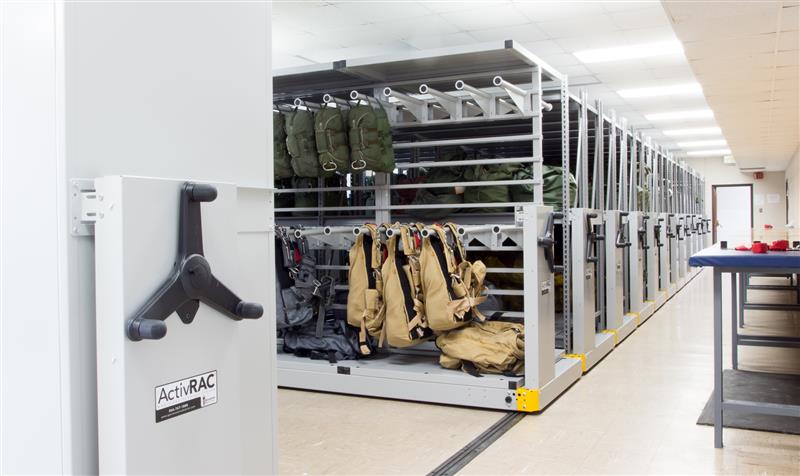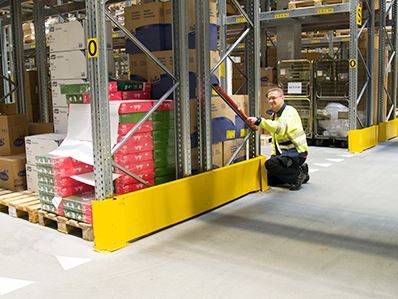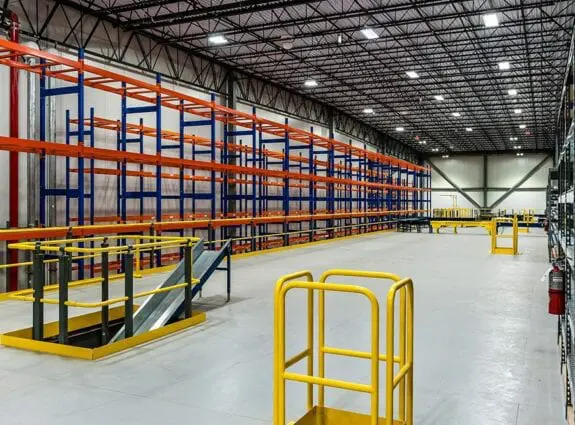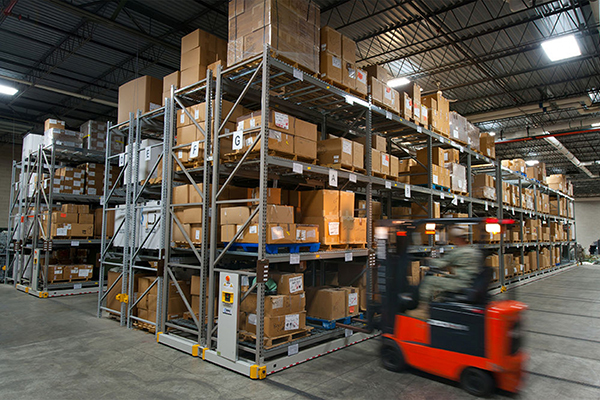
When considering the meticulous requirements for long-term military parachute storage, it’s imperative to understand the critical nuances involved in preserving these vital assets. Proper storage is not just about placing parachutes in a designated space; it involves a comprehensive approach to ensure durability and functionality. Factors such as environmental conditions, handling protocols, and regular maintenance play pivotal roles in safeguarding the integrity of parachutes over extended periods. By adhering to specific storage guidelines and implementing suitable maintenance practices, military personnel can ensure that their parachutes remain in optimal condition for deployment when needed. Understanding the significance of correct storage procedures is fundamental in maintaining readiness and operational efficiency.
Understanding Military Parachute Storage Requirements
For military parachute storage, understanding the specific requirements is crucial. Military installations must have the right storage solutions to ensure durability and readiness. These solutions include a broad selection of sizes, optimum storage density, and modular drawer cabinets. Proper storage not only protects the parachutes but also other collateral gear in the vicinity. Military personnel need secure storage that caters to their specific needs, such as weapons storage systems and good organization practices. Property loss due to inadequate storage can hinder operational readiness and logistics. Therefore, military bases must invest in durable storage systems that provide quick access and proper upkeep for all gear, including parachutes.
The Importance of Proper Parachute Storage
Military parachutes are critical assets that necessitate appropriate handling to ensure their longevity and effectiveness. Proper parachute storage is vital in maintaining their functionality and safety for future use. Neglecting storage protocols can lead to damage, hampering their deployment readiness and potentially risking personnel safety. By adhering to the right military storage solutions and implementing secure storage practices, military personnel can prevent property loss and ensure that parachutes remain in optimal condition. Understanding the specific needs of parachute storage, including factors like storage cabinets and deployment logistics, is essential in guaranteeing their durability and operational efficacy for when they are needed most.
Factors Affecting Long-Term Parachute Durability
Improper storage conditions, such as exposure to humidity or extreme temperatures, can significantly impact the long-term durability of parachutes. The quality of the storage environment directly affects the material integrity, leading to potential structural weaknesses and reduced effectiveness during deployment. Inadequate storage can accelerate wear and tear on critical components, compromising overall safety and performance. Factors like UV exposure, poor ventilation, and lack of protection from pests can also contribute to premature degradation. Understanding and addressing these elements are crucial for ensuring that parachutes remain in optimal condition for extended periods of time, ready for deployment when needed.
Pre-Storage Inspection and Maintenance
Before placing military parachutes in long-term storage, conducting a thorough pre-storage inspection is crucial. An inspection checklist tailored to parachute specifics should be meticulously followed to ensure optimal condition maintenance. Regular inspections aid in identifying any wear or tear that may worsen during storage, ultimately affecting the parachute’s durability. Cleaning and necessary maintenance tasks should be carried out before storing to prevent corrosion or damage from developing further. Proper pre-storage care significantly extends the lifespan of military parachutes, safeguarding their functionality and reliability for future use.
Inspection Checklist for Parachutes Pre-Storage
Before storing military parachutes, ensure a thorough inspection is conducted. The checklist should include examining the canopy for tears, checking suspension lines for any damage or wear, and verifying the condition of the container and harness system. Inspect the pilot chute, main lift web, and reserve components meticulously for any signs of deterioration. Ensure all deployment systems are functioning correctly and test the release mechanisms. Document all findings for future reference. Prioritize repairs and maintenance as needed to guarantee optimal performance during deployment. Proper pre-storage inspections are crucial to extending the longevity of parachutes and maintaining operational readiness.
Cleaning and Maintenance Tips Before Storage
Proper preparation before storing military parachutes is crucial to ensure their longevity. Cleaning the parachutes thoroughly by following manufacturer guidelines helps prevent damage from contaminants and environmental factors. Regularly inspecting for wear, tear, or any signs of damage is essential. Conducting necessary repairs beforehand can prevent minor issues from escalating during storage. Additionally, ensuring the parachutes are completely dry before storing helps inhibit mold growth and material degradation. Utilizing appropriate storage solutions like modular drawer cabinets or storage cabinets optimized for parachute size and shape is vital for maintaining their integrity. Implementing these cleaning and maintenance practices before storage contributes significantly to the overall durability and readiness of military parachutes.
Specialized Folding Techniques for Parachutes
Parachutes require specialized folding techniques to ensure proper deployment and functionality. Understanding the intricate folds and creases is crucial for maintaining the integrity of the canopy material. Military personnel must meticulously follow prescribed folding methods to minimize the risk of malfunctions during deployment. Utilizing NLP terms such as “deployment” and “parachute” emphasizes the importance of precision in storage procedures. By incorporating these specialized folding techniques into regular maintenance routines, the longevity and effectiveness of the parachute can be preserved, ensuring readiness for any mission or deployment scenario. Emphasizing the significance of correct folding techniques showcases the attention to detail required in handling military gear. Specialized folding techniques contribute significantly to the overall durability of parachutes, directly impacting operational readiness.
Step-by-Step Guide to Folding Military Parachutes
Carefully folding military parachutes is crucial for their longevity. Start by laying the parachute on a clean, flat surface, ensuring there are no sharp objects nearby. Begin by folding the canopy in a zigzag manner, keeping the lines neat and untangled. Next, fold the canopy into a compact rectangle, securing it tightly. Remember to stow the lines tidily alongside the canopy. Utilize proper folding techniques to prevent damage during storage, ensuring quick deployment when needed. Following these steps meticulously will maintain the parachute’s integrity and readiness for future use.
Common Folding Mistakes and How to Avoid Them
Improper folding techniques can significantly impact the longevity and effectiveness of military parachutes. One common mistake is folding the parachute fabric too tightly, which can lead to creases and potential damage during deployment. To avoid this, ensure a balanced approach to folding, allowing for smooth unfolding when needed. Another error is neglecting to secure the lines properly, increasing the risk of entanglement and malfunctions during descent. To prevent this, follow the manufacturer’s guidelines for line organization and secure bundling. By avoiding these folding mistakes through proper techniques and attention to detail, you can enhance the functionality and reliability of your long-term parachute storage.
Advanced Parachute Storage Solutions
When considering advanced parachute storage solutions, military installations prioritize secure storage systems. Leveraging modular drawer cabinets and storage cabinets provides optimum storage density for long-term parachute maintenance. Patterson Pope offers a broad selection of sizes to meet specific needs, ensuring good organization of military gear. These solutions not only enhance readiness but also reduce the risk of property loss. Incorporating weapons storage systems and gear lockers allows for quick access to collateral gear when needed for deployment. By implementing durable shelving and lockers, military bases can maintain the durability of parachutes and other equipment, contributing to overall logistics efficiency.
Climate-Controlled Storage Options
Climate-Controlled Storage Options play a vital role in maintaining the durability of long-term military parachutes. By providing stable temperature and humidity levels, these storage solutions help prevent deterioration of parachute materials due to extreme environmental conditions. Utilizing climate-controlled facilities ensures that the parachutes remain in optimal condition, ready for deployment whenever needed. Proper storage conditions contribute significantly to the overall longevity and effectiveness of military gear. Implementing climate-controlled storage options demonstrates a commitment to safeguarding valuable assets and maintaining readiness levels for military personnel.
Innovative Storage Systems for Space Optimization
Space optimization is paramount in military installations to ensure efficient storage capacity. Utilizing innovative storage solutions like modular drawer cabinets and weapons racks can significantly enhance storage density. These systems, tailored to specific needs, offer quick access to gear and ammunition, crucial for military readiness. Companies like Patterson Pope provide a broad selection of sizes in storage cabinets and gear lockers, ideal for securing military supplies. Implementing these storage systems not only minimizes property loss but also aids in good organization for easy deployment. By incorporating cutting-edge shelving and locker systems, military bases can streamline logistics and improve overall operational effectiveness.
Monitoring and Maintaining Parachutes During Storage
Regularly monitoring and maintaining parachutes during storage is crucial to ensure their integrity and usability when needed. Establish a detailed inspection schedule to identify any signs of wear, tear, or damage promptly. Addressing issues found during these inspections is vital to prevent potential malfunctions during deployment. Utilize secure storage solutions like modular drawer cabinets or storage systems specifically designed for military gear to maintain optimum storage density. Properly storing parachutes in an organized manner not only maximizes storage capacity but also minimizes the risk of property loss or damage. Stay vigilant with your monitoring practices to uphold the durability and readiness of your parachutes for future deployments.
Regular Inspection Schedule for Stored Parachutes
To ensure the longevity and functionality of stored military parachutes, a regular inspection schedule is imperative. Scheduled inspections should encompass thorough checks of the parachute canopy fabric, suspension lines, deployment bag, and any attachments. Implementing a systematic approach, possibly quarterly or bi-annually, depending on storage conditions, helps in identifying any signs of wear, tear, or deterioration promptly. These inspections are crucial in preempting potential issues that may compromise the parachute’s performance during deployment. By adhering to a strict inspection regimen, military personnel can uphold the readiness and reliability of their parachutes for mission-critical scenarios.
Addressing Issues Found During Storage Inspections
Inspecting stored parachutes is critical to ensuring their functionality. Addressing issues discovered during these inspections is vital for long-term storage success. Issues like tears, mold, or damage must be promptly dealt with to maintain parachute integrity. Utilize right military storage solutions to safeguard against environmental factors. Implement a military storage solution tailored to your specific needs to minimize property loss and ensure equipment readiness. Regular inspections are key to addressing issues promptly and maintaining logistics readiness. By promptly addressing issues found during inspections, you can prevent potential damage and guarantee the effectiveness of your stored parachutes for future deployment.
Preparing Parachutes for Deployment After Long-Term Storage
After being in long-term storage, preparing parachutes for deployment is crucial to ensure their functionality and safety. Unfolding the parachute and conducting thorough pre-deployment checks are essential steps before use. Re-folding techniques post-inspection help maintain the parachute’s integrity and readiness. By following proper procedures during this preparatory phase, any potential issues or wear and tear can be detected and addressed promptly. It is vital to guarantee that the parachute is in optimal condition before deployment to ensure the safety of military personnel relying on them. Implementing meticulous preparation processes post-storage is fundamental in maintaining the durability and effectiveness of military parachutes.
Unfolding and Pre-Deployment Checks
Ensure the readiness of parachutes by conducting thorough unfolding and pre-deployment checks. Properly unfold the parachute system to assess its condition and verify all components are intact. Inspect for any signs of damage, wear, or malfunctions that may compromise its functionality during deployment. Check the canopy fabric, suspension lines, and connectors for any anomalies. Perform a meticulous pre-deployment examination to guarantee that the parachute is in optimal condition for use. These checks are crucial in ensuring the safety and effectiveness of the parachute system during missions.
Re-Folding Techniques Post-Inspection
Ensure the parachute is clean and dry before starting the re-folding process. Begin by laying the parachute out on a clean and flat surface to avoid any creases or wrinkles. Follow the original folding patterns meticulously to maintain the integrity of the parachute. Pay close attention to any damaged areas or wear and tear during the inspection phase to address them appropriately before re-folding. Take your time and be methodical to prevent any mistakes that could affect the functionality of the parachute during deployment. Proper re-folding techniques post-inspection are crucial for ensuring the parachute is stored correctly and ready for future use.
Conclusion
Proper maintenance and storage of military parachutes are essential for ensuring their longevity and reliability. By adhering to rigorous inspection schedules, addressing any issues promptly, and preparing them correctly for deployment after long-term storage, military personnel can uphold the readiness and safety of their equipment. Implementing the right military storage solutions, such as modular drawer cabinets or weapons storage systems, can enhance the efficiency of storage systems in military installations. Good organization and secure storage not only prevent property loss but also contribute to the overall operational readiness of the armed forces. With a focus on durability and logistics, maintaining parachutes and other military gear is crucial for swift deployment and effective mission execution.




